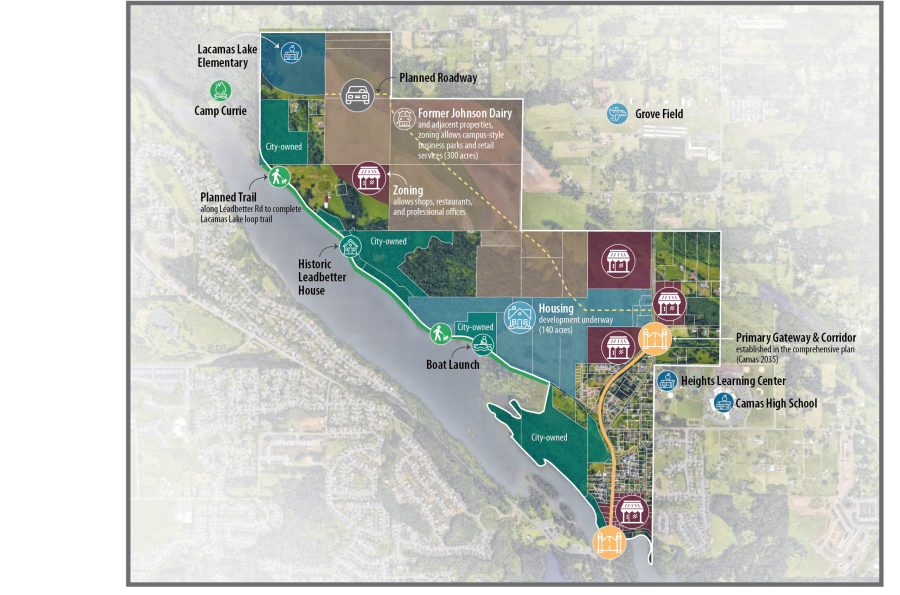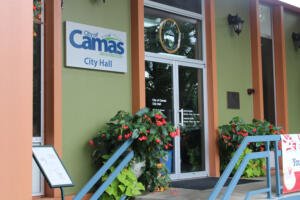The vision for Camas’ North Shore area — an 800-acre swath of land extending from Lacamas Lake to Camas’ northern city limits long touted for its potential to house the city’s burgeoning population, provide parks and open spaces for future generations and build the city’s inventory of commercial and light-industrial lands — is beginning to take shape.
On July 21, Camas Senior Planner Sarah Fox presented the Camas Planning Commission with an overview of the North Shore Subarea Plan’s first phase. The Commission is expected to hold a public hearing on this “vision phase” at its Aug. 18 meeting.
“It’s always good to be proactive about infrastructure before development comes in,” Fox said, adding that the city has already managed to acquire about 270 acres in the North Shore area. “We’ve been talking to longtime property owners (in the North Shore) for a long time, so when all the pieces started to come into place over the past several years, it made sense to update our plans to reflect this new ownership.”
The city recently purchased hundreds of acres along Lacamas Lake from longtime property owners, including more than 140 acres of open space and 70 acres of lakefront property.
The city intends to use the land to retain natural areas in the North Shore, build a continuous, multi-use trail around the lake and develop public parks. But much of the now public land, including lakefront parcels, had previously been zoned for housing and jobs, so the city will need to rebalance its zoning inside the North Shore and in other areas, Fox said.





